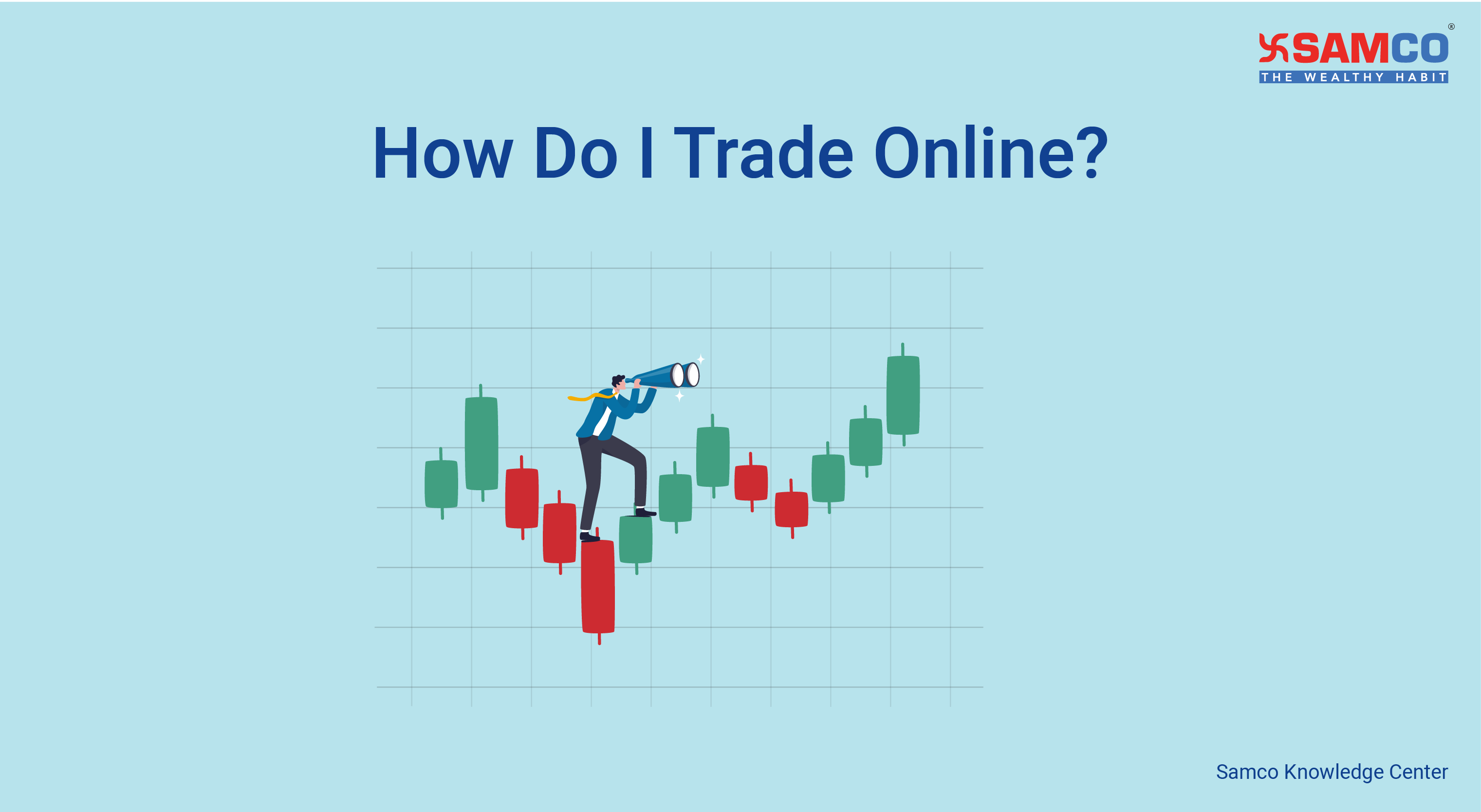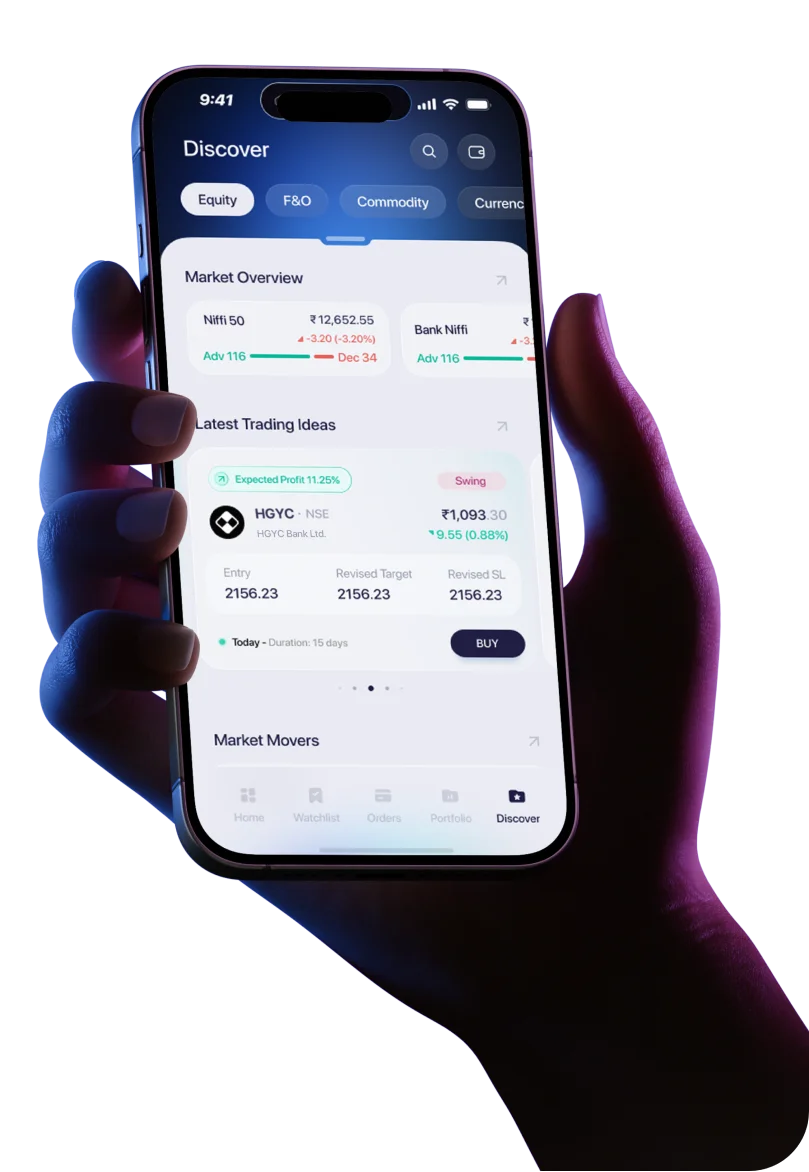 If you wish to create wealth in the long term, then the stock market is the highway which will lead you there. Today, online trading has gained a lot of traction. But beginners who are looking to trade often seem a little overwhelmed by the process of trading. They often wonder, how do I trade online? If you are one of them then this article is for you.
If you wish to create wealth in the long term, then the stock market is the highway which will lead you there. Today, online trading has gained a lot of traction. But beginners who are looking to trade often seem a little overwhelmed by the process of trading. They often wonder, how do I trade online? If you are one of them then this article is for you.
First, Let Us Understand What Is Online Share Trading?
Online share trading means buying and selling shares of companies listed on the stock exchanges in an electronic form. This is done through the online platform provided by your broker.Through This Trading Terminal You Can Place Various Types of Orders Such as:
- Market order: This order is executed at the current market price of a share.
- Limit order: Here you can set a predetermined price to buy or sell a share.
- Stop loss order: In this order you take precaution to save yourself from heavy losses because of sudden market fluctuations.
Let’s Now Look at Types of Online Share Trading
1. Scalping
In scalping a trader takes very small positions and covers it in small profits. Typically, such trades last from few seconds to minutes. This is a trading strategy that attempts to make many profits on small price fluctuations.2. Intraday Trading
Intraday trading or day trading is all about buying and selling shares on the same day. Here you book profits by the end of a trading session and don’t hold positions overnight. Most day traders use leverage facility provided by the broker to amplify the returns generated from small price movements. Recommended watch: Best intraday trading strategy3. Swing Trading
In swing trading, a trader tries to take benefit of a stock’s recent trend. So, if a stock is following a particular channel and we see a breakout, a swing trader will try to take advantage of this trend. Here the trader focuses on stocks that are moving significantly in one direction on high volume. The ideal time frame for swing trading is several hours to several days. This depends on how quickly the stock moves and when it changes direction.4. Positional Trading
In positional trading, a trader analyses a stock and focuses on capturing medium term trend of a stock. In this type of trading, a trader attempts to capture gains of a stock in some weeks to few months. even weeks. Recommended watch: How to select stocks for swing trading?
The Workflow
The arrival of online trading has opened up equal opportunities for every individual to participate in the stock market. All one needs to do is:- Open a trading and Demat account.
- Get access to a trading terminal provided by your broker. .
- Place an order to trade securities. For example, buying shares.
- The terminal would execute the order and transfer securities.
- Exit the market by selling the acquired securities.
The Accounts Needed for Trading
Shares of listed companies are traded at a stock market. While these can be accessed online for trading purposes, individual investors cannot directly interact with them for executing trades. Instead, they need to open an account with a broker registered with them. The broker would provide the trader with login credentials to buy and sell on the stock market. These transactions may attract brokerage and tax liabilities payable to the broker and the government respectively. These are trading & demat accounts. A trading account is like a bank account which is used to pay for and receive payments from stock trades. This needs to be connected to a banking account (either saving or current) from where the trading funds can be transferred back and forth. This provides one access to trading platform or terminal to place trade orders as desired. A demat account is like a digital locker where the shares are held in a dematerialized format. Instead of physical share certificates, a digital equivalent will be stored in the demat account.How do these accounts work?
When one places an order to buy a share, the money from the trading account will be used to pay for the same. If you have invested in stock SIP, then you don’t have to worry about funding your trading account every now and then. Instead, the amount required for stock SIP is auto-debited from your bank account. If you prefer buying shares on your own, then you can manually transfer the funds from bank account to the trading account. This is important so that the overall investment portfolio is well-balanced between share market investments and investments in other instruments like fixed deposits, saving accounts etc. Once the purchase is executed, the trading account would store the digital share in the connected demat account. Similarly, when a sell order is placed, the trading account would access the demat account to verify the availability of shares for the sale. Once the sale is executed, the funds will be credited to the trading account. It is advisable to periodically transfer any unused funds to a saving account as they would typically earn a higher interest there.Where Can You Open a Trading and a Demat Account?
To start trading or investing you need to open a trading and Demat account with any registered stockbroker. There are various types of brokers available. These brokers are bank brokers, full-service brokers and discount brokers. Each of these types of brokers has advantages and disadvantages. Let’s take a look at each of these types of brokers. Bank Brokers: Banks like SBI, HDFC, ICICI, Kotak Mahindra, Axis etc. provide a 3-in-1 account. That is a saving account, trading and Demat account rolled into a single service offering. This means you do not have to worry about manually transferring the amount between your bank and trading account. Since the bank itself is acting as the broker, this becomes a convenience for the trader as no withdrawal request needs to be placed with the broker when funds are needed. Traditional brokers: Traditional or full-service brokers include institutes like Sharekhan, Angel One, Motilal Oswal, etc. They provide not just access to a trading terminal but also tips or recommendation based on their research. Typically, the brokerage charges levied by the full-service brokers are on the higher side. These can vary from 5 paise to 10 paise per share for intraday (buying and selling shares on the same day) and 10 paise to 50 paise per share for delivery. Discount brokers: Now, the thing that we don’t realise in the case of traditional brokers is that you end up paying a huge part of your profits as brokerage. And a higher brokerage means that you will end up with a smaller amount as profits. So, what if you wish to maximise your profit earned? In such case you simply need to open a Demat account with a discount broker like Samco. Discount brokers like Samco provides an access to a robust trading terminal just like bank and traditional brokers. But, they do not share any recommendations like traditional brokers. This means that a trader/ investor has to do his own research before deciding which companies to invest in. But you don’t need to worry about anything as we have expertly curated a Samco Stocks Ratings Page. This makes your research process a lot simpler. So, if you wish to invest in a stock and are unsure if it is worth buying or not, simply head over to www.samco.in/stock-rating and search for the stock you wish to research. It not only gives a stock rating on a scale of 1 to 5 but also provides a list of pros and cons of investing in the company that too for free. The ratings are updated every day after analysing 20 million data points. So, the next time you need to research a stock all you need is Samco Stock Ratings. So, let’s move ahead to understand the discount broking model. Discount brokers charge much lower brokerage on each order. Unlike the traditional brokers who charge brokerage on a percentage basis, discount brokers charge a flat fee on each order. At Samco, we charge a flat fee for equity delivery of Rs. 20 or 0.20% whichever is lower. For Intraday Trades and Future and Options (F&O) trades the brokerage is Rs. 20 Or 0.05% whichever is lower. So, no matter how big order you place, you will not end up spending more than Rs. 20 on the brokerage of every executed trade. Check out how can you save 83% brokerage by opening a Demat account with Samco. Now the question is how can you open a Demat account with Samco.Here is a list of things you will need to open a Demat Account
- Pan card
- Address proof – This could be any aadhar card, passport, driving license, voter ID, utility bill or the latest bank statement.
- Income proof – This could be any among a copy of an income tax return, form 16, salary slip from an employer or six months bank statement.
- Bank account – A cancelled cheque or a copy of the first page of the bank passbook to verify the bank account details.
How to Select a Stock Broker?
While the perfect broker for each trader or investor will vary based on their trading needs, here are a few important points to keep in mind while selecting one:- Make sure that the broker is registered with all the stock exchanges and with relevant regulatory bodies like SEBI.
- Check the account minimums. Some brokerage firms impose a minimum initial deposit requirement. The reason for it is that traditional brokers cannot make enough money on small accounts. Some may even impose a minimum investment requirement. This may become challenging for people who want to invest in limited instruments – say only in mutual funds. That said, there are quite a good number of brokerages that have no lower minimum requirement.
- Based on your investment plan and target portfolio, prioritize the broker with lower commission on instruments one will use the most. A broker will typically offer investments in:
- Check if there is any account fee. Most brokers will charge a withdrawal fee for transferring funds out. Similarly, some fee may be associated with closing the account completely. While these fees may not be avoided, keep an eye out for other hidden fees and chose a broker that does not have any of these:
- Annual fee
- In activity fee
- Fee for broker-assisted trades. For example, a fee to set up a systematic investment plan i.e. automatically placing the same order on a given date each month.
- Trading platform fee
- Extra charge for research and data
- Fee for printing a paper statement
- Match one’s trading style and technology needs with what the broker provides. For example, if an investor plans to make a limited number of transactions they should avoid brokers who charge an inactivity fee if a minimum number of trades are not executed in a given month or in a quarter or a year. While a beginner may need help through tutorial videos and in-person seminars which are provided free of cost by many brokers. On the other hand, an experienced trader who will place many orders in a single day would prefer access to analysis tools, advanced trading platform features and discounts of high-volume trades instead.
- Keep an eye out for promotions. Online brokers, like any other service provider frequently run promotional schemes to attract new customers. While it would be foolish to choose a broker based on promotions alone, they could turn out to be a sweetener when more than one broker meets all requirements.
- Check the customer ratings.



 Easy & quick
Easy & quick
Leave A Comment?